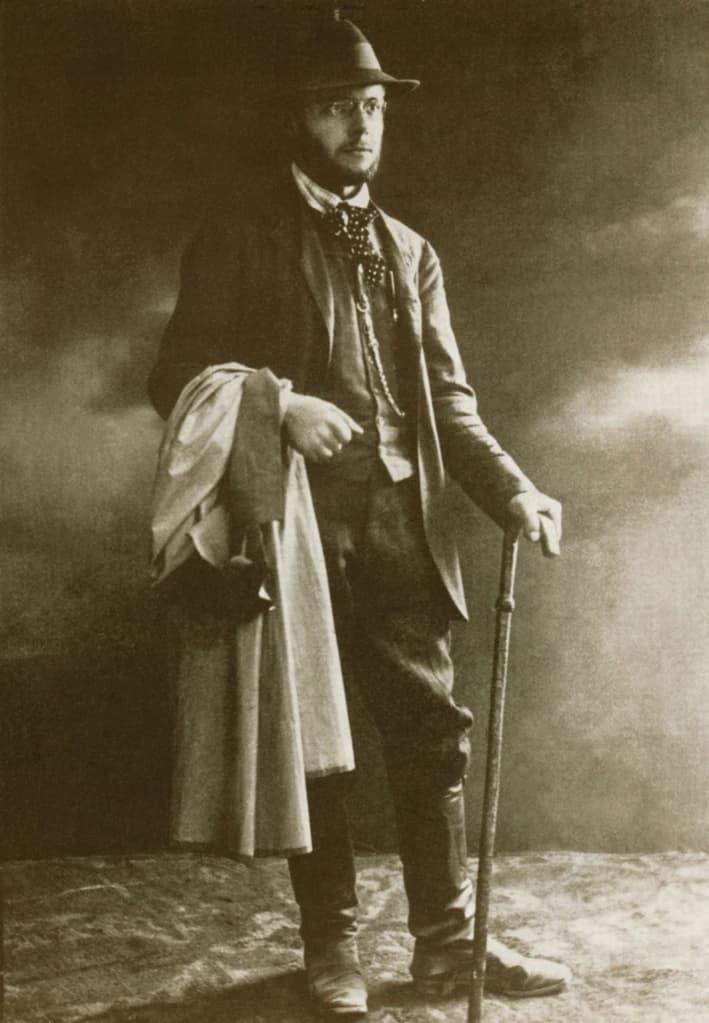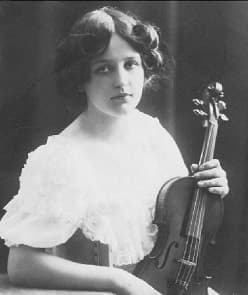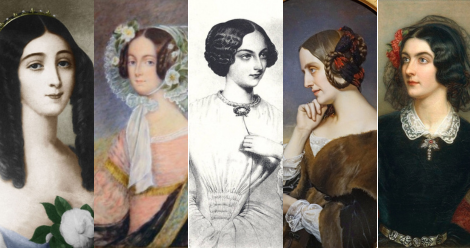Béla Bartók (1881-1945) started his musical journey at age 5 with piano lessons at home before he went to the Budapest Academy of Music in his teens. His teacher, István Thomas, had been a student of Liszt and his training in composition was in the strict Germanic tradition of the time. However, a bit of Debussy’s impressionism found its way into that fortress and then Bartók discovered Richard Strauss. Bartók attended the premiere of Also sprach Zarathustra in 1902 and he was smitten. At age 21, Bartók found in Strauss a model for his future orchestral writing, freed from his Germanic training.

Béla Bartók about to set off on a folk-song collecting tour, 1907 (photo by István Kováts)
In 1907, as a teacher at the Academy of Music in Budapest, Bartók wrote his Violin Concerto for the young player Stefi Geyer. Geyer was an extraordinary artist on the violin and Bartók was infatuated. Unfortunately, she was not. The day he finished the concerto was the day he received her congé. He sent her the manuscript for the concerto nevertheless and although she never played it, she never got rid of it either. The piece was finally published in 1959 after her death.

Stefi Geyer
Following the break with Stefi Geyer, Bartók composed two tone poems, known collectively as Two Portraits. The first portrait, known as Ideal, takes its music from the first movement of the Violin Concerto, opening with the ‘Stefi theme’ in the solo violin. Taken as an aria, and intended to be a loving portrait of his Stefi, the first theme is filled with love and longing. Alternatively dreamy and hopeful, nevertheless, there’s an undertone of despair in the line. The melancholic English horn takes up with the theme, the strings filling in with languid and beautiful support until the brass enters with their final plea. The work ends in a shimmering major chord that contrasts with the earlier minor despair of the ending of the first theme.
Béla Bartók: 2 Portre (2 Portraits), Op. 5, BB 48b: No. 1. Egy idealis (Ideal) – Andante (Michael Ludwig, violin; Buffalo Philharmonic Orchestra; JoAnn Falletta, cond.)
In the second portrait, Bartók uses a theme from his own works, quoting his Bagatelle No. 13, which he had written in 1907. The Stefi motif here is transformed into a grotesque imitation of its original incarnation. In this, Bartók had a most famous model in Berlioz’s transformation of the idée fixe of the Symphony fantastique into a grotesquerie at the end of that similar piece dedicated to a lost love. The brass is snarky and biting, the percussion sharp and rhythmic, the strings are devilish, and then, above them all, in the Berlioz model, the Stefi theme floats on the high clarinet.
Béla Bartók: 2 Portre (2 Portraits), Op. 5, BB 48b: o. 2. Egy torz (Grotesque) – Presto (Michael Ludwig, violin; Buffalo Philharmonic Orchestra; JoAnn Falletta, cond.)
A composer in love is the source of beautiful melodies…. but a composer rebuffed can make for the most forceful commentary on that melody!
For the background of Bartók’s infatuation with Stefi Geyer, see A Musical Portrait of Unrequited Love.
For more of the best in classical music, sign up for our E-Newsletter


Photos of Stefi Geyer show a beautiful woman. But she must have had a personality and aura that expanded it. Bartok was one of a few composers who had a big crush on her. The Swiss composer Othmar Schoek comes to mind.